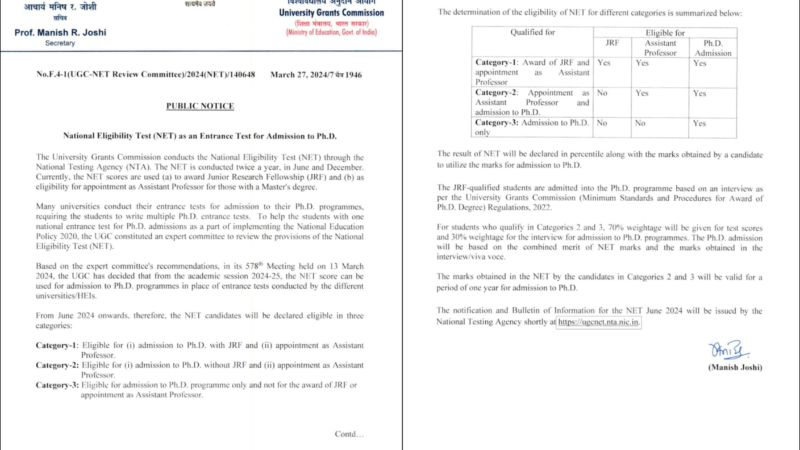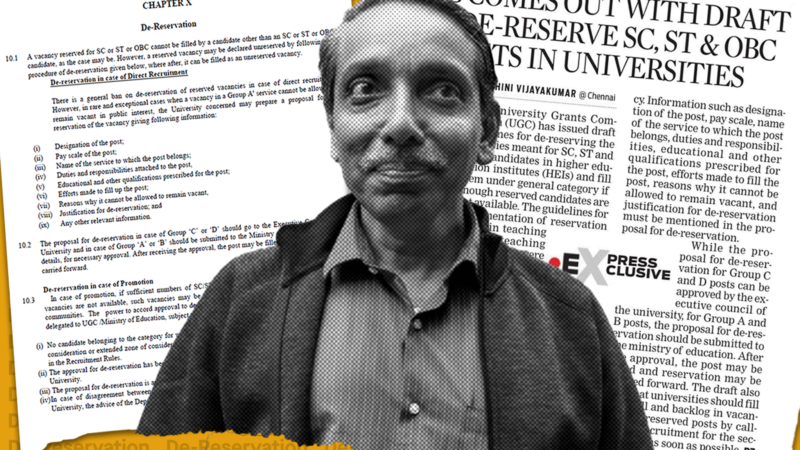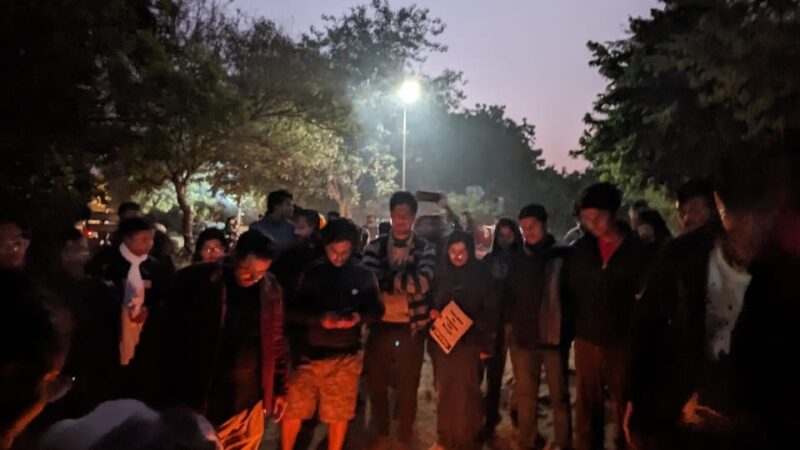10 Reasons Why UGC CUET Will Create More Problems for Students
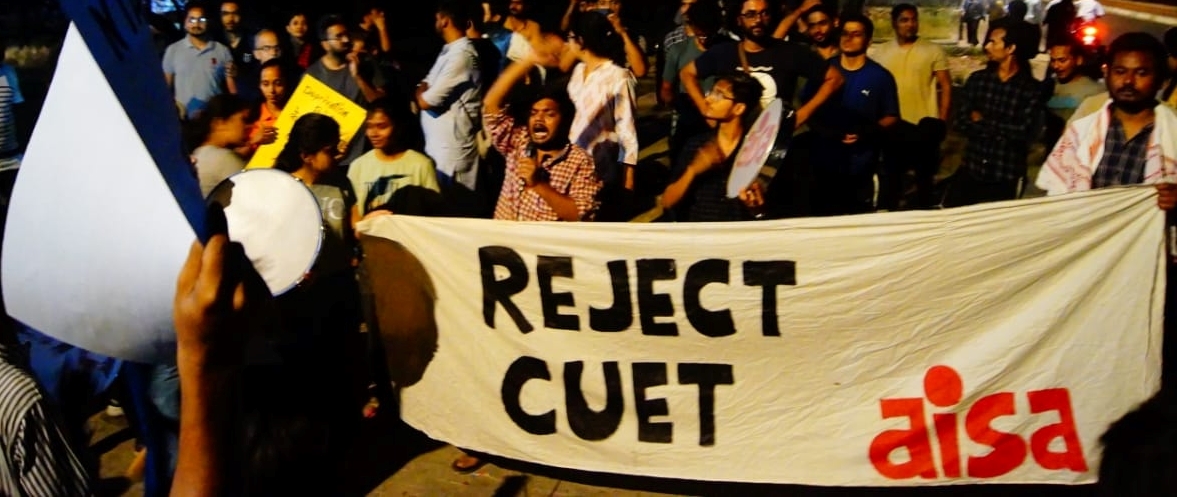
UGC is claiming that uneven and absurdly high marking in board exams is the reason for high cut-offs in universities and colleges, and that CUET will resolve this issue. Let’s see if there’s any truth behind this.
1) What really is the problem and where are the solutions directed?
Can the problem of Exclusion through High Cut-Offs be remedied by Another Mode of Exclusion?
For years, students have raised their voices against sky-rocketing “cut-offs” for college admission. In the last few years, even scoring 99 percent marks has not secured admission to desired colleges and courses. And, isn’t the doling out of 99-100 percent to thousands of students making a mockery of Indian higher education? All this is done at the behest of the private school cartels who have emerged as the gate-keepers of higher education. Their extremely high fees and blatant emphasis on the ‘social status’ of parents as a criterion for admission has ensured the exclusion of students of common and deprived backgrounds, who are then forced to study in public schools which have been deliberately broken down by the Indian state acting at the behest of private education lobby. The doling out of 100 percent marks to these elite private schools has not only made a mockery of Indian higher education but also ensured that students from common, deprived and rural backgrounds are denied entry into the colleges of their choice. It is the pressure of student protests that has forced the government to scrap the cut-off system. But is CUET a solution?
The state Boards as well as the CBSE are under supervisions of different state of central governments. So why can’t the govt ensure some equivalence across boards or, why can’t the govt issue strict academic norms for reasonable marking across boards? Why, instead, are the students being forced to go through another round of Centralized screening/evaluation, for no fault of their own? Further, when the CUET syllabus goes far beyond what they studied during Plus 2 level, what then is the real intent?
2) Elimination and NOT Admission is the real motive. So, the real reason behind the move is not uneven/high marking by boards, for which there are wiser and easier alternative solutions. The root problem is that the government is unwilling to provide enough opportunities – colleges, universities, seats and courses for all the students who pass class 12th and wish to proceed to higher education. So, it brings an additional screening examination that is meant not to increase the scope of admission, but to eliminate a large number of students from receiving higher education. CUET does not come with an increase in the seats or an increase in the number of universities and colleges to ensure everyone “gets a fair chance”, but it in fact narrows down this elimination procedure.
3) What is the experience of several existing centralized exams like JEE, NEET, CLAT etc- meant for admissions in several “professional” courses? Last year nearly 16 lakh students applied for NEET, for getting admission into medical education with around 83,000 MBBS seats, 27,000 BDS and 53,000 AYUSH seats! The remaining students who couldn’t afford high capitation fees and missed chances, migrated outside India to Ukraine, China, Russia and other countries. Similarly, the case of IIT-JEE, India’s premier examination for entry into IIT’s, NIT’s and other central engineering colleges is no different. Over 22 lakh students had applied for IIT-JEE examination in 2021 conducted in four phases for nearly 16,000 seats in IITs. Likewise, CLAT, an exam conducted for entrance for law universities has around 75,000 students appearing with 2100 seats available for taking.
We know how the students aspiring for medical, engineering etc, have to repeatedly appear in these exams until they get a college of their choice, and even drop several years. This frustrating situation will now be extended to entire section students passing Plus 2 level.
4) In such a situation, who pays and who gains? Coaching centres have already been feeding off the cut-throat competition in “common” exams like JEE, NEET, and CLAT. With CUET, Modi govt has planned to roll out the policy of “crack the exam via coaching mafias” for all sectors of higher education including arts, basic sciences, and humanities offered in standard UG and PG programs.
While for professional courses of NEET, JEE, and CLAT there are coaching hubs like Kota and Hyderabad, for CUET, an entrance for all central universities, coaching institutes will sprout in every nook and corner of the country. Predatory companies like Byjus are already at our doorsteps with their online ads for CUET training packages, even before the syllabus and structure of CUET were announced!
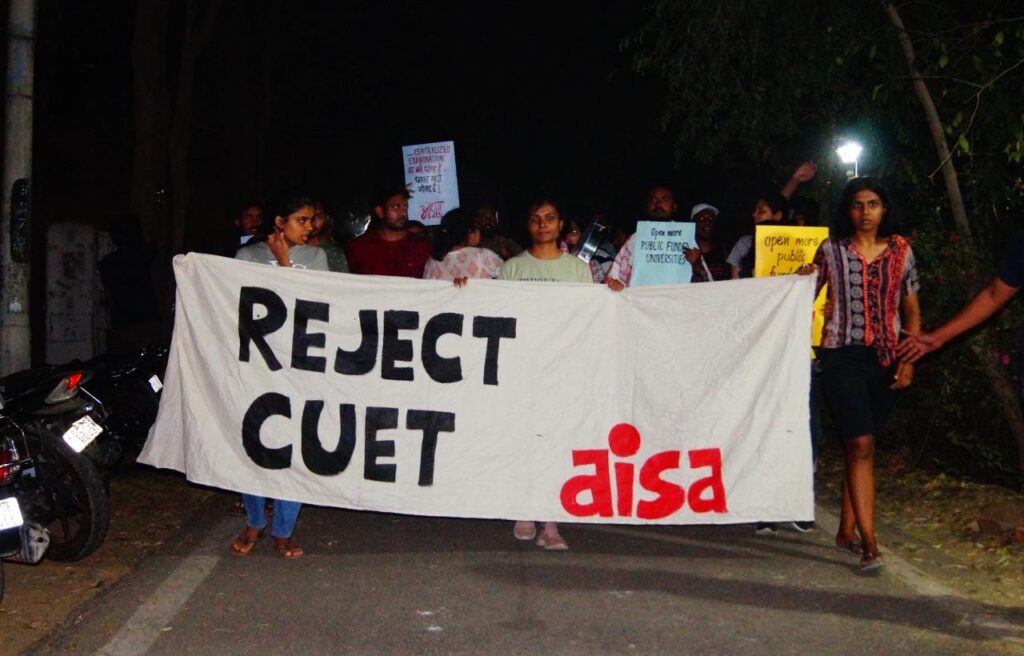
5) Shifting the onus: The whole process of fighting for a few seats, through coaching and numerous competitive examinations, pushes the onus on students and removes the accountability and responsibility of the government to ensure accessible, affordable and quality education for all!
6) What would it in turn spell for Plus 2 level education and Board examination? Introduction of CUET will make the students solely oriented towards preparation of this exam to get into the best universities and colleges. This in turn, will force students to join coaching centres from class 11th itself, which in turn will compromise their school studies and board examinations. So, then what will be the relevance of board examinations?
7) Additional Burden of a vast syllabus – What about the students wanting to get admission this year, who have had no clue of such an exam until now? CUET will consist of 2 sections of languages chosen by the students, 1 section of 6 Domain Specific Subjects chosen by students, and another 1 section of a General Test with questions on General Knowledge, Current Affairs, Mathematical Reasoning, and Logical and Analytical Reasoning, etc. It is stated that these choices have to be made as per requirements of desired universities. For increased chances of getting admission, a student may have to undergo the rigorous preparation of as many as 9 courses, even if we club the General Test as one course.
Long form reading-writing skills can be imparted only through improved school education. But all the focus on the objective-type CUET will completely detach students from such school education, which will be a mere credential attaining exercise, and increase rote-learning for Section III subjects.
What justifies putting a student through the pressure of going through such a rigourous preparation to get admission to a UG course? Only that the intention is of elimination of the larger number of students, and not of giving them access!
8) CUET reduces and/or takes away the choice to change one’s stream after 12th. A student wanting to study a subject, say History, at undergrad doesn’t have to demonstrate prior knowledge of History. CUET not only first asks a student to clear a test before changing the stream, but also it effectively restricts changing streams because how will a student who has studied Science till 12th clear a test on History taught in class 12th? The least that can be said about such an evaluation system is that it is unfair, burdensome and discriminatory.
9) Under CUET, it is only privileges that will decide what kind of education we get to pursue and in which college. With the vast syllabus of CUET, the skills it demands from students, and the NCERT syllabus as the benchmark for Section III it is obvious that the exam will push out students coming from State Boards and other smaller boards. In NEET and JEE mostly students coming from urban, English-speaking backgrounds clear the exams because they have more facilities and resources. A centralized common exam, where all existing inequities in different levels of education have not been addressed, will continue to push students from rural and marginalized backgrounds.
The inequalities will in fact get amplified with the free-handed loot by the coaching institutes. It will further reduce the already limited opportunities particularly for women, if they don’t get desired scores and thus desired university of their choice at first attempt.
10) What should have been done instead? In India, different universities flourished with different kinds of strength and expertise. Students wishing to pursue a particular combination for subjects can apply for the set of colleges/universities of their choice and appear for some specific entrance test if the concerned University finds it necessary. Instead of a CUET type One- size- fits- all model of Centralised Common Exam, UG admissions can be based on a judicious combination of Plus 2 level marks and some entrance test. Presently, JNU, HCU, Jamia Millia, BHU, Allahabad University and others are following this mode, with reasonable success and satisfaction. Why take this away? Even in a large university like DU, there can be discipline specific entrance test to moderate high cut off effect. Why force every student to face a common centralized exam requiring a defined skill set over and
above what they learn at Plus 2 level? And, larger is the ambit of a “common” entrance/elimination test, easier and larger will be stranglehold of the coaching business!
Country needs Common and Equal Opportunity to Access education, NOT Common Tests to Eliminate, when opportunities are so vastly different. Instead of forcing a “Common Entrance (/or Elimination) Test”, why isn’t the govt committing to “Common School System” demanded by the educationists for decades. Instead of devising ever new tricks of elimination like CUET, the govt should increase seats and courses in Colleges and Universities education to enroll more and more students aspiring for higher education!
In sum, CUET is a part of the Push-Out-Policy of education, which Modi government likes to call National Education Policy 2020! The more privileged one is – socially, regionally, caste-class-and gender wise, the better chance at getting admission in one’s desired college or university.
CUET is both anti-student and anti-education at all parameters. If the need for a common entrance exam has arisen, it means that the existing system is of no use. It is only meant for step-by-step exclusion of students from education at different points in their life from primary to secondary to higher education. Giving everyone a fair chance in reality means every student who wants to study gets admitted into higher education institutes, and not designing policies to eliminate them even from the very threshold level of higher/ university education!
India’s youth need a policy to Educate-Empower-Emancipate. Instead, Modi government’s CUET-FYUP-NEP is a blueprint to Eliminate-Exit-Exclude!!
